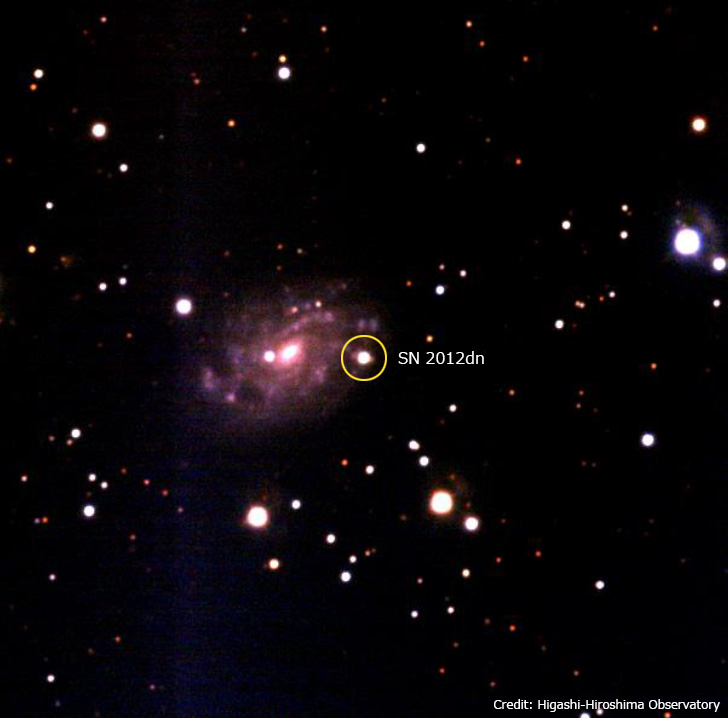Japan OISTER collaboration uncovers the origin of extraordinary supernovae
| Science

Using data obtained through the Optical and Infrared Synergetic Telescopes for Education and Research (OISTER) in Japan, Masayuki Yamanaka, a Taro Hirao Foundation Researcher at Konan University, demonstrated that the origin of extraordinary supernovae can be explained by the ‘accretion scenario.’ The researchers discovered an anomalously strong infrared emission from ‘the extraordinary supernova’ SN 2012dn, which has never been observed in other Type Ia supernovae to date. Through detailed analysis, the researchers concluded that the infrared emission comes from the material ejected from the progenitor system.

This research was published in ‘Publications of the Astronomical Society of Japan’ on May 18, 2016. (Yamanaka et al. “OISTER optical and near-infrared observations of the super-Chandrasekhar supernova candidate SN 2012dn: Dust emission from the circumstellar shell”)
Link
- Masayuki Yamanaka (Taro Hirao Foundation Researcher) and his colleagues revealed the origin of 'extraordinary over-luminous supernova' using observational data obtained through the Optical Infrared Synergetic Telescope for Education and Research (Konan University)
- Japan OISTER collaboration uncovers the origin of extraordinary supernovae (Hiroshima University)
- OISTER Web (Japanese)